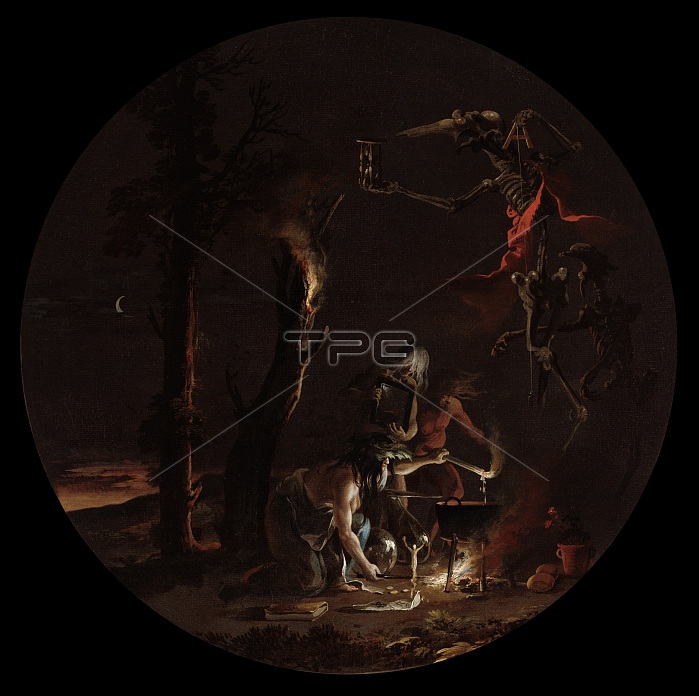
Scenes of Witchcraft: Evening, c. 1645-1649. At dusk, Rosa's hags gather around a cauldron. Above their incantations soars a conjured skeleton holding an hourglass symbolizing the brevity of life. In its left hand, the demonic creature holds a capital letter A from which extends a plumb line; as ancient signs of the moon and judgment, this strange combination of symbols embodies the nocturnal judgment the witches are doling out below. Though more rare in paint, the detailed portrayal of witches at their spells enjoyed a long literary tradition. The wax effigy alludes to classical literature by Virgil and Horace that described love magic. Poets in the 1500s and 1600s continued the tradition, writing verse about witches concocting potions and performing love spells. In Rosa's own poem "La Strega (The Witch)," the jilted Phyllis vows to take revenge on her feeble lover, listing the ingredients for her black magic: "ground powders, mystic gems, snakes and owls, stinking blood. . . ." Painting was considered "mute poetry" in the 1600s, and Rosa often explored the same themes in his written and painted art?a clever way to gain fame as a unique intellect.
| px | px | dpi | = | cm | x | cm | = | MB |
Details
Creative#:
TOP25298179
Source:
達志影像
Authorization Type:
RM
Release Information:
須由TPG 完整授權
Model Release:
No
Property Release:
No
Right to Privacy:
No
Same folder images:

 Loading
Loading